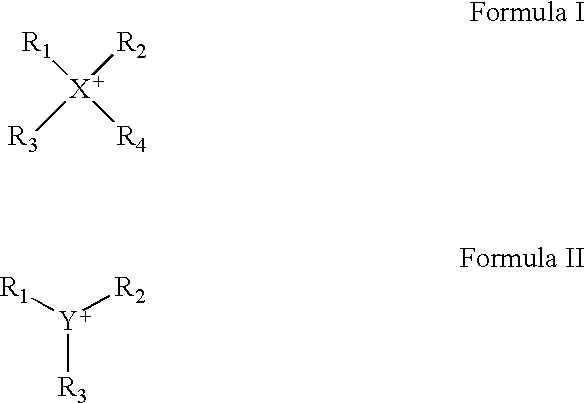Intumescent polymer compositions
a polymer composition and additive technology, applied in the direction of aluminium/calcium/magnesium active ingredients, medical preparations, pharmaceutical delivery mechanisms, etc., can solve the problems of reducing adverse effects of additives on processing or properties, and limiting the commercial success of intumescent polymer systems, so as to achieve synergistic effect and reduce the amount of additives
- Summary
- Abstract
- Description
- Claims
- Application Information
AI Technical Summary
Benefits of technology
Problems solved by technology
Method used
Image
Examples
examples 19 through 28
In the following examples, additive compositions consisting of 48.5% pentaerythritol phosphate alcohol, 48.5% melamine phosphate, and 3% of one of sodium montmorillonite clay A, B or hectorite clay C were blended with polypropylene as noted above and fabricated into 1 / 16" test bars. Sodium montmorillonite clay A is available from Southern Clay, Inc., grade Cloisite Na. Sodium montmorillonite clay B had the characteristics shown in Table 5 whereas hectorite clay C is characterized as in Table 6.
(All metals are expressed as oxides, which are complexed in the mineral.)
TABLE 6
(All metals are expressed as oxides, which are complexed in the mineral.)
TABLE 7
TABLE 8
TABLE 9
examples 29 through 35
The following examples illustrate the effectiveness of various ammonium polyphosphate-based (APP)FR / polypropylene compositions which were prepared and tested as above. The particular ammonium polyphosphate composition employed was a commercially available product which is believed mostly APP, but also contains other additives.
examples 36 through 41
The following examples in Table 11 demonstrate the effect of zinc borate in a flame retardant polymer composition consisting of the indicated amount of polypropylene, flame retardant FRD which was 3% sodium montmorillonite clay B, 48.5% pentaerythritol phosphate alcohol and 48.5% melamine phosphate. The various compositions were prepared and rated as noted above.
As will be appreciated from the foregoing, the montmorillonoid ionic phyllosilicate is typically included in amounts of from about 0.3 to about 1.5 weight percent based on the weight of the composition; whereas, from about 0.5 to about 0.7 is sometimes particularly preferred. The acid catalyst and nitrogen sources are typically present in amounts of less than about 25 percent by weight of the composition and preferably less than 18 weight percent in compositions characterized by a 94V-O rating.
The weight ratio of the acid catalyst source to the nitrogen source is in some embodiments from about 70:30 to about 30:70; or from a...
PUM
| Property | Measurement | Unit |
|---|---|---|
| temperature | aaaaa | aaaaa |
| aspect ratio | aaaaa | aaaaa |
| aspect ratio | aaaaa | aaaaa |
Abstract
Description
Claims
Application Information
 Login to View More
Login to View More - R&D
- Intellectual Property
- Life Sciences
- Materials
- Tech Scout
- Unparalleled Data Quality
- Higher Quality Content
- 60% Fewer Hallucinations
Browse by: Latest US Patents, China's latest patents, Technical Efficacy Thesaurus, Application Domain, Technology Topic, Popular Technical Reports.
© 2025 PatSnap. All rights reserved.Legal|Privacy policy|Modern Slavery Act Transparency Statement|Sitemap|About US| Contact US: help@patsnap.com



